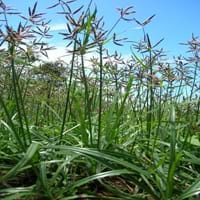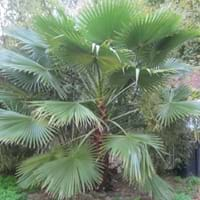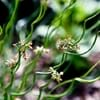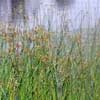Life Span
Perennial
Perennial
Type
Sedge or Rush
Palm or Cycad
Origin
World/Pandemic
United States, Southeastern United States
Types
Not Available
Not Available
Habitat
Wild
Coastal sand dunes, Dry areas, moist forests, Wet lands
USDA Hardiness Zone
5-12
8-12
Sunset Zone
A1, A2, A3, H1, H2, 1a, 1b, 2a, 2b, 3a, 3b, 4, 5, 6, 7, 8, 9, 10, 11, 12, 13, 14, 15, 16, 17, 18, 19, 20, 21, 22, 23, 24
H1, H2, 7, 8, 9, 10, 11, 12, 14, 15, 16, 17, 18, 20, 21, 22, 23, 24
Habit
Mat-forming
Clump-Forming
Minimum Width
Not Available
Flower Color
Orange, Gold, Bronze, Tan
White
Flower Color Modifier
Bicolor
Bicolor
Fruit Color
Dark Brown
Black
Leaf Color in Spring
Green, Yellow green
Light Green, Blue Green, Gray Green
Leaf Color in Summer
Green, Yellow green
Green, Blue Green, Gray Green, Silver
Leaf Color in Fall
Green, Yellow green
Blue Green, Gray Green
Leaf Color in Winter
Green, Yellow green
Blue Green, Olive, Gray Green
Leaf Shape
V-Shaped
Palmate
Plant Season
Not Available
Spring, Summer, Fall, Winter
Sunlight
Full Sun, Partial Sun
Full Sun, Partial Sun, Partial shade
Growth Rate
Very Fast
Slow
Type of Soil
Clay, Loam, Sand
Clay, Loam, Sand
The pH of Soil
Acidic, Neutral, Alkaline
Acidic, Neutral, Alkaline
Soil Drainage
Average
Well drained
Bloom Time
Summer
Spring, Late Spring
Tolerances
Drought
Wet Site, Pollution, Salt, Soil Compaction
Where to Plant?
Ground
Container, Ground
How to Plant?
creeping rhizomes, Seedlings, Tubers
Seedlings
Plant Maintenance
Medium
Medium
Watering Requirements
Requires consistently moist soil
Drought Tolerant, occasional watering once established
In Summer
Lots of watering
Lots of watering
In Spring
Moderate
Moderate
In Winter
Average Water
Average Water
Soil pH
Acidic, Neutral, Alkaline
Acidic, Neutral, Alkaline
Soil Type
Clay, Loam, Sand
Clay, Loam, Sand
Soil Drainage Capacity
Average
Well drained
Sun Exposure
Full Sun, Partial Sun
Full Sun, Partial Sun, Partial shade
Pruning
Remove damaged leaves, Remove dead branches, Remove dead leaves
Remove damaged leaves, Remove dead branches, Remove dead leaves
Fertilizers
All-Purpose Liquid Fertilizer
All-Purpose Liquid Fertilizer
Pests and Diseases
Rust
Birds
Plant Tolerance
Drought
Drought
Flowers
Insignificant
Insignificant
Flower Petal Number
Single
Single
Foliage Texture
Fine
Coarse
Foliage Sheen
Not Available
Matte
Allergy
Oral Allergy
gas, Heartburn, Nausea, Stomach pain, Vomiting
Aesthetic Uses
Not Available
Unknown
Beauty Benefits
Good for skin, Protects from sun damage
Not Available
Environmental Uses
Air purification
Air purification
Medicinal Uses
Aphrodisiac, Digestive, Diuretic, Tonic
chest congestion, Cough, Digestion problems, Inflammation, Sedative, Thyroid problems, Urinary problems
Part of Plant Used
Fruits
Fruits
Other Uses
For making oil, used for weaving hats
Paper pulp, Used in herbal medicines
Used As Indoor Plant
No
No
Used As Outdoor Plant
Yes
Yes
Garden Design
Not Available
Container, Feature Plant, Foundation, Mixed Border, Rock Garden / Wall, Tropical
Botanical Name
CYPERUS esculentus
SERENOA repens
Common Name
Nut Sedge,chufa sedge, nut grass, yellow nutsedge
Saw Palmetto
In Hindi
अखरोट सेज
Serenoa
In German
Nuss -Segge
Sägepalme
In French
souchet
Serenoa repens
In Spanish
tuerca de la juncia
Serenoa repens
In Greek
καρύδι σπαθόχορτο
Serenoa
In Portuguese
Nut Sedge
Serenoa repens
In Polish
nakrętka turzyca
Serenoa
In Latin
nut Sedge
Serenoa
Phylum
Magnoliophyta
Magnoliophyta
Class
Liliopsida
Liliopsida
Family
Cyperaceae
Arecaceae
Genus
Cyperus
Serenoa Hook. f.
Clade
Angiosperms, Commelinids, Monocots
Angiosperms, Commelinids, Monocots
Tribe
Cypereae
Trifolieae
Subfamily
Not Available
Coryphoideae
Number of Species
Not Available
Importance of Nut Sedge and Saw Palmetto
Want to have the most appropriate plant for your garden? You might want to know the importance of Nut Sedge and Saw Palmetto. Basically, these two plants vary in many aspects. Compare Nut Sedge and Saw Palmetto as they differ in many characteristics such as their life, care, benefits, facts, etc. Every gardener must at least have the slightest clue about the plants he wants to plant in his garden. Compare their benefits, which differ in many ways like facts and uses. The medicinal use of Nut Sedge is Aphrodisiac, Digestive, Diuretic and Tonic whereas of Saw Palmetto is chest congestion, Cough, Digestion problems, Inflammation, Sedative, Thyroid problems and Urinary problems. Nut Sedge has beauty benefits as follows: Good for skin and Protects from sun damage while Saw Palmetto has beauty benefits as follows: Good for skin and Protects from sun damage.
Compare Facts of Nut Sedge vs Saw Palmetto
How to choose the best garden plant for your garden depending upon its facts? Here garden plant comparison will help you to solve this query. Compare the facts of Nut Sedge vs Saw Palmetto and know which one to choose. As garden plants have benefits and other uses, allergy is also a major drawback of plants for some people. Allergic reactions of Nut Sedge are Oral Allergy whereas of Saw Palmetto have gas, Heartburn, Nausea, Stomach pain and Vomiting respectively. Having a fruit bearing plant in your garden can be a plus point of your garden. Nut Sedge has no showy fruits and Saw Palmetto has showy fruits. Also Nut Sedge is not flowering and Saw Palmetto is not flowering . You can compare Nut Sedge and Saw Palmetto facts and facts of other plants too.





